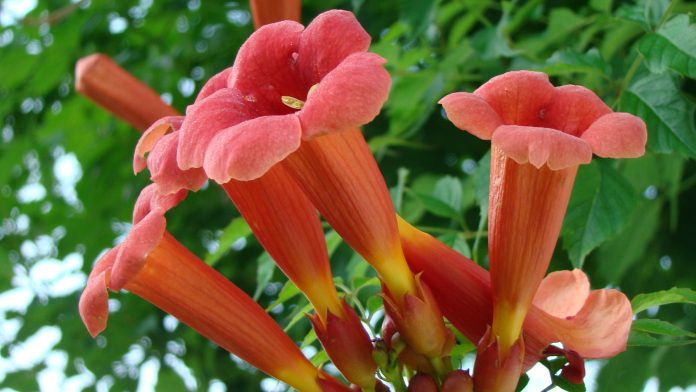Almost any plant can be a houseplant if you want it to be, even a tree if it’s grown as a bonsai. Although in growing houseplants the limitation is the space and light available, the plant choices are infinite. If you have the patience for one little houseplant, this might be a perfect one. African Violet or Saintpaulia blooms almost all the time, even in winter.
African Violet or Saintpaulia is tidy and compact, with pretty, oval, fuzzy leaves surrounding the flowers, which grow up in the center, making the plant look like a bouquet. Sometimes the leaves are bronzed or variegated. Hybridizers have produced thousands of varieties whose flower colors range from a wonderful intense blue to purple, magenta, lavender, pink, coral, and white but no real red as yet.
African Violet or Saintpaulia flowers are normally about an inch wide, some are ruffled or fringed, and some are bicolored. All have bright yellow stamens in the center. Standard-sized plants grow up to a foot tall, and semi-miniature are 6 to 8 inches, as are the true miniatures, which have tiny flowers. There are also trailing varieties.
The Optimara, Ballet, and Rhapsodie series all contain excellent varieties. If your interest is sparked, you may want to investigate the wider world of African violets. If you do not have much light, and your rooms are on the cool side, you won’t have good luck with them unless you grow some newer varieties bred for low light and cooler temperatures. Consult the African violet society for further information.
If you want to grow African Violet, then do best in a warm room where it is at least 70 degrees during the day and no colder than 60 degrees at night. A light should be bright but not the direct sun; fluorescent lights and growing lights designed for plants seem custom-made for African violet, and may enthusiasts use these alone.
The plants prefer quite humid air, especially the trailing ones and soil that is kept evenly moist, though it is all right for the soil to dry out for a day if the plants are not actively growing. They respond very poorly to over-watering and poor drainage. Use water that is at room temperature and try to keep the leaves dry to avoid leaf spot diseases.
Moreover, the easiest way to give African violets the soil they like is to buy a bag of commercial “African violet soil”, or you can make your own mix using one part peat or leaf mold for organic matter and one part sand or perlite for good drainage. Thus, feed about once a month with “African violet food” or a standard houseplant fertilizer that is not too high in nitrogen, or you will get lots of beautiful fuzzy leaves and no flowers.
Overfeeding is also a grave error, causing the leaves to turn gray, and the leaf stems to rot. Flush out excess fertilizer salts regularly. Farther, use fairly small, shallow pots, keeping the plants a bit root bound, and turn any potted plants from time to time if most light comes from one side, otherwise, your flower display will be lopsided.
Crowns can be derived, but leaf-cutting is the best way to propagate African violets. Use a medium-sized leaf and dip the stem in rooting powder. African violets don’t last forever; after they become woody often decline, that’s the time to take leaf cuttings.
Read About – Lily Flower Information – Wide Range of Shape Colors, and Sizes







